Jerri Bartholomew
Science Studies
For nearly four decades I have researched an enigmatic group of fish parasites, the myxozoans. Relatives of free-living jellyfish, sea anemones and corals, myxozoans have shed most of the traits of their larger cousins in favor of adaptations that allow them to become parasites. Thousands of species exist, probably as many or more than there are species of fish, and their adaptations are unique, deadly, and often beautiful. Because these parasites are about the size of a human blood cell, this beauty isn’t visible without the aid of a microscope.
I began these science studies in glass over 20 years ago. Like my research, they have evolved as I learned different techniques and experimented with different forms of artistic abstraction. Equally interesting to me are the tools we use to make scientific discoveries, and how these have changed. As a microbiologist, glass microscope slides are the tools of our trade, but every time I sit down at a microscope it is with the anticipation that something interesting or beautiful will be revealed. The tools of our profession continue to evolve, but their purpose remains to understand and take advantage of beneficial microbes, and to find ways to combat those that are dangerous.
Under the Microscope
The parasites I study are invisible to the naked eye and thus a microscope is an important tool in my research. I find microscope slides themselves to be magical; small pieces of glass that hold an invisible surprise that changes with magnification.
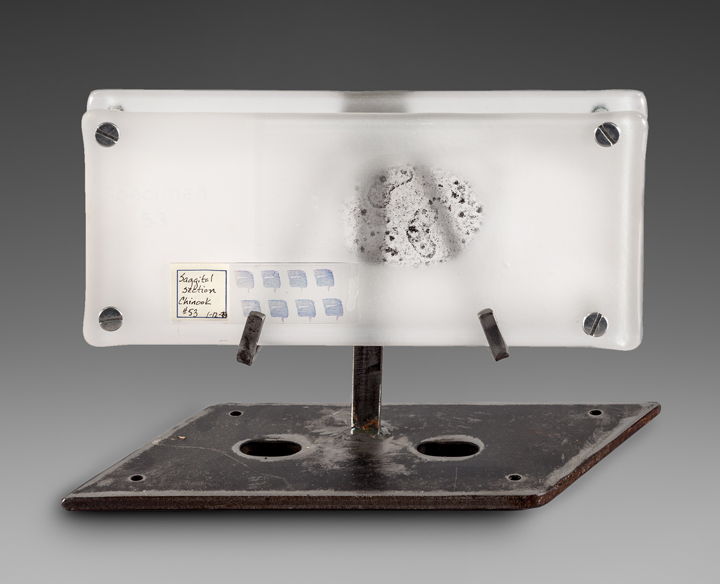
Under the Microscope: Specimen 53
Screenprinted, fused and sandblasted glass with found objects, 2016
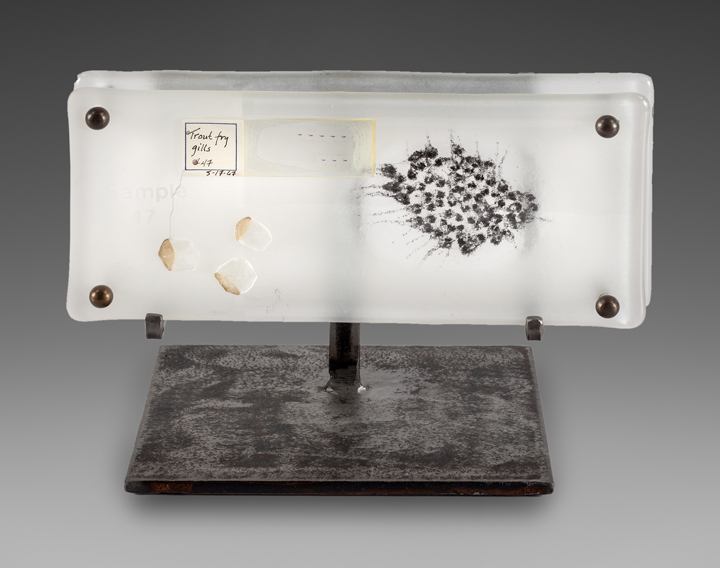
Under the Microscope: Specimen 17
Screenprinted, fused and sandblasted glass with found objects, 2016
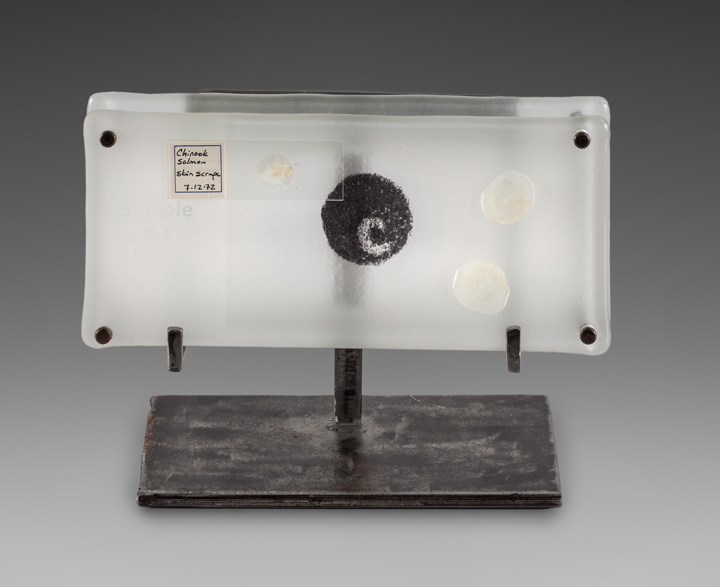
Under the Microscope: Specimen 63
Screenprinted, fused and sandblasted glass with found objects, 2016
Parasite
Under the microscope, parasites can be beautifully complex. To evoke the image of an isolated organism seen through a lens, I etched the parasite forms into glass rounds and applied enamel to create the feel of a scientific illustration. Mounting the rounds in discarded gears evokes looking through a lens.
Ceratonova
Etched and enameled fused glass, welded metal frame, 2017
Myxidium
Etched and enameled fused glass, welded metal frame, 2017
Sidlickiella
Etched and enameled fused glass, welded metal frame, 2017
Trichodina
Etched and enameled fused glass, welded metal frame, 2017
Spore
I used pate de verre, a glass casting process involving application of a paste of finely ground glass to a plaster mold, to reimagine the two valve shells that make up a myxozoan spore. This method allows for controlled use of color, but also of texture, giving the pieces an organic feel. One half of the spore shows the outer shell surface; the other half shows the internal stinging cells and nuclei.
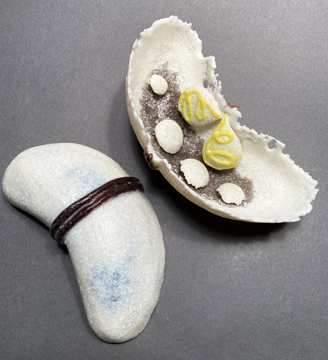
Ceratonova 1
Pate de verre, 2020
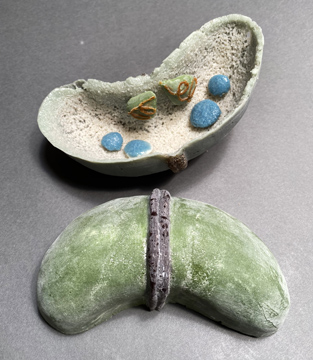
Ceratonova 2
Pate de verre, 2020
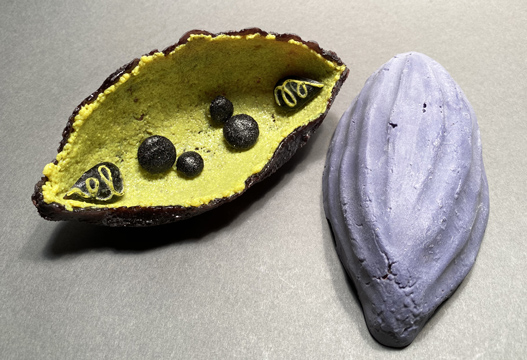
Myxidium
Pate de verre, 2020
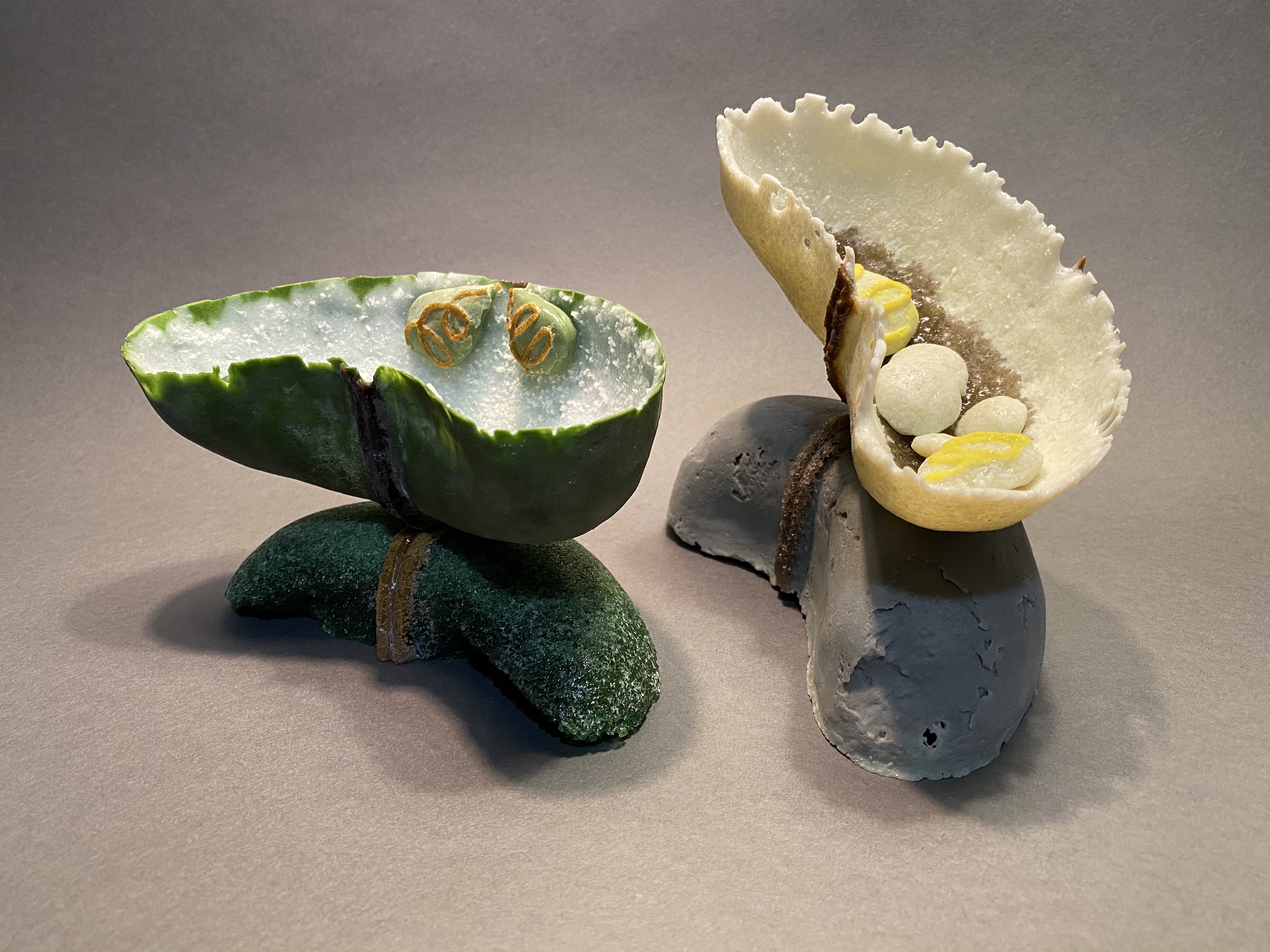
Ceratonova sculptures
Pate de verre, 2020
Abstracted
Graphic swim casting method, developed by Jeffrey Sarmiento, allows for controlled flow of screen-printed images. I have used this method to further abstract these parasites, using data from my own research on parasite life cycles and genomes, as well as being inspired by others. Abstracted, gene sequences blurs over images that suggest both the parasite and the fish it infects. Another piece blends a musical composition with the structural protein image that inspired it.
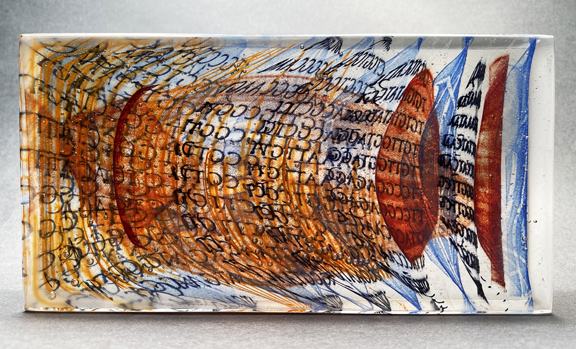
Myxidium Abstracted
Screenprinted and cast glass, 2019
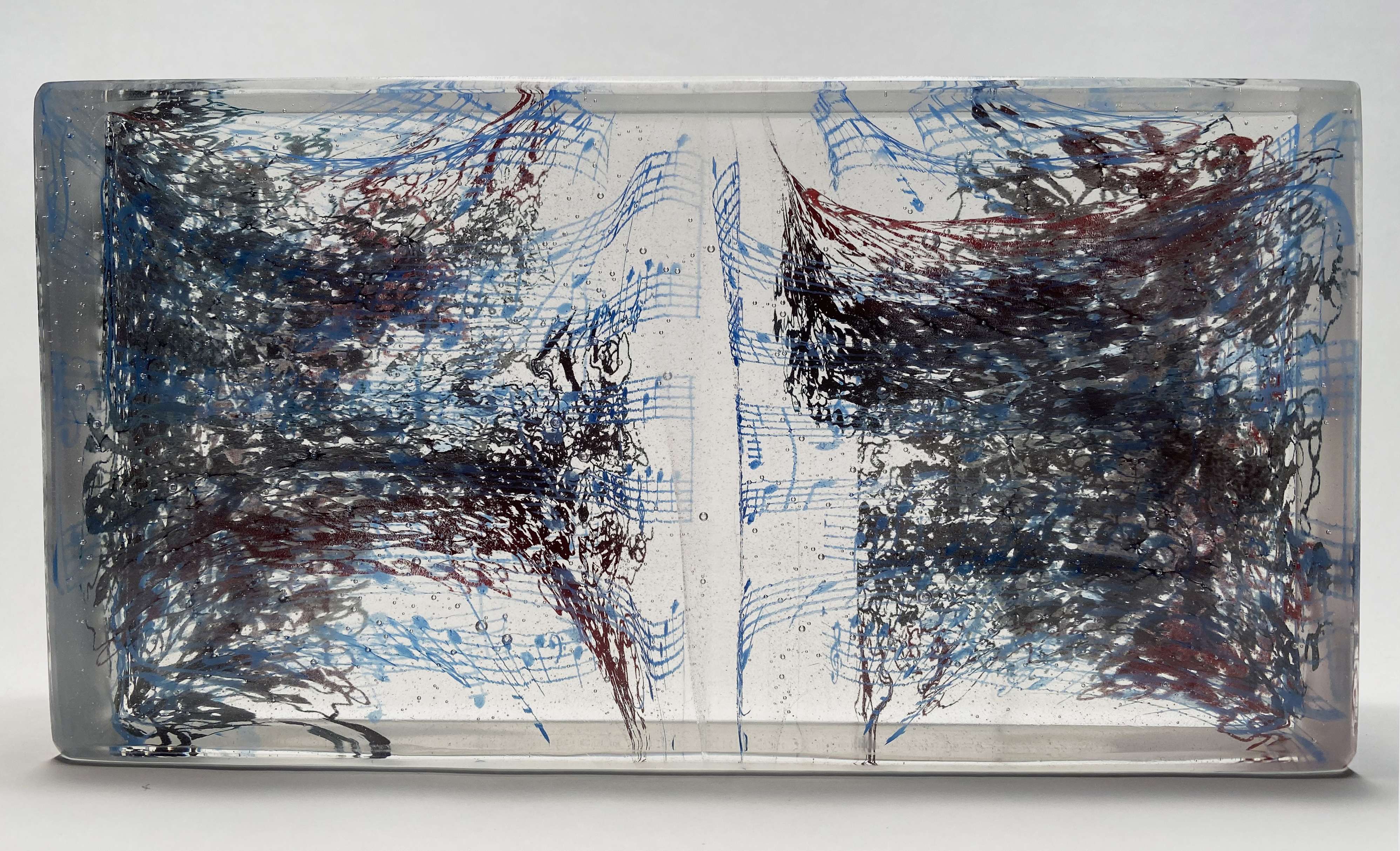
Covid Sonnet
Screenprinted and cast glass, 2020
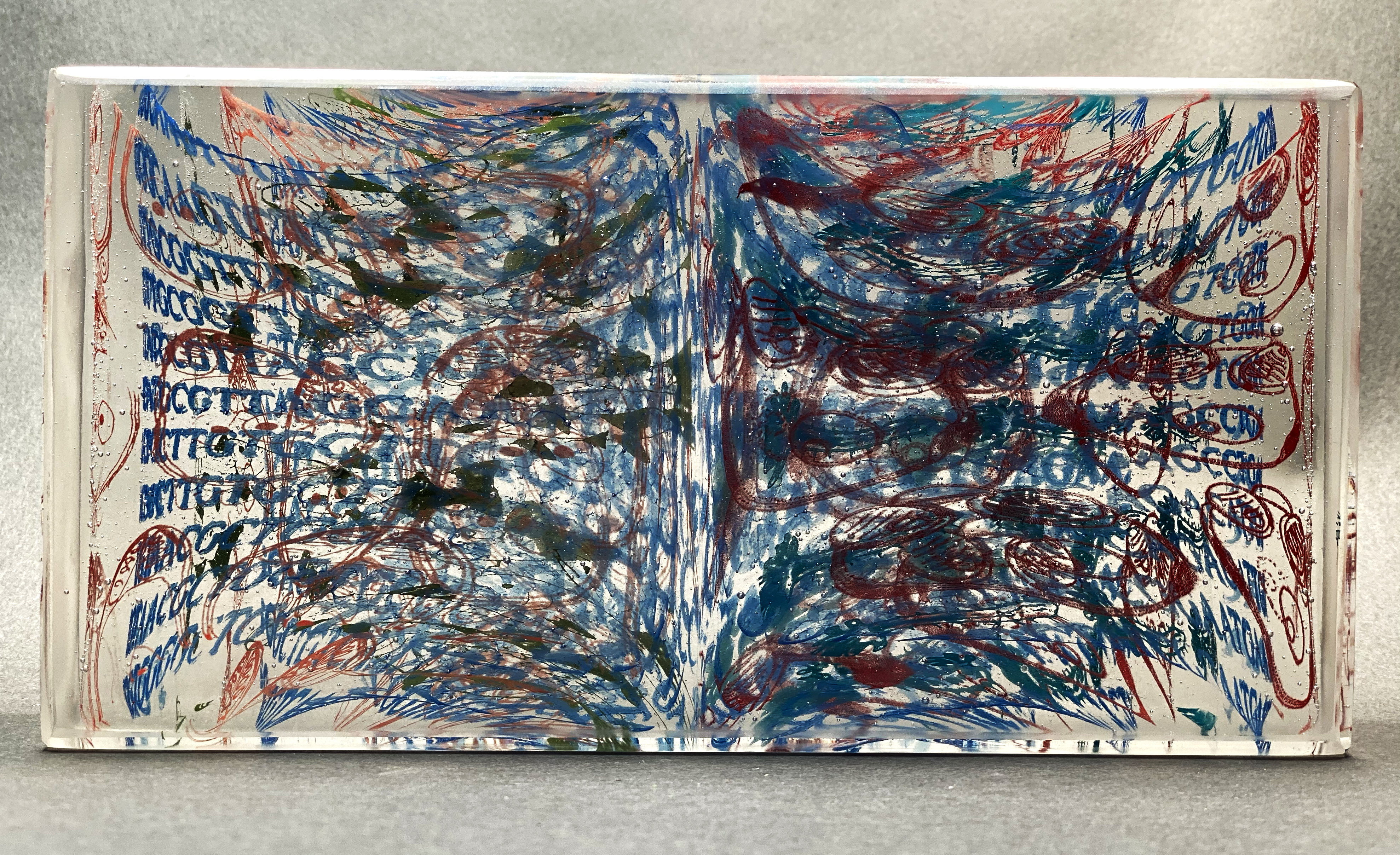
Parvicapsula
Screenprinted and cast glass, 2020
Cabinets of Curiosity
Historically a means of displaying collections, these cabinets have an artistic component as well as providing information on natural history.
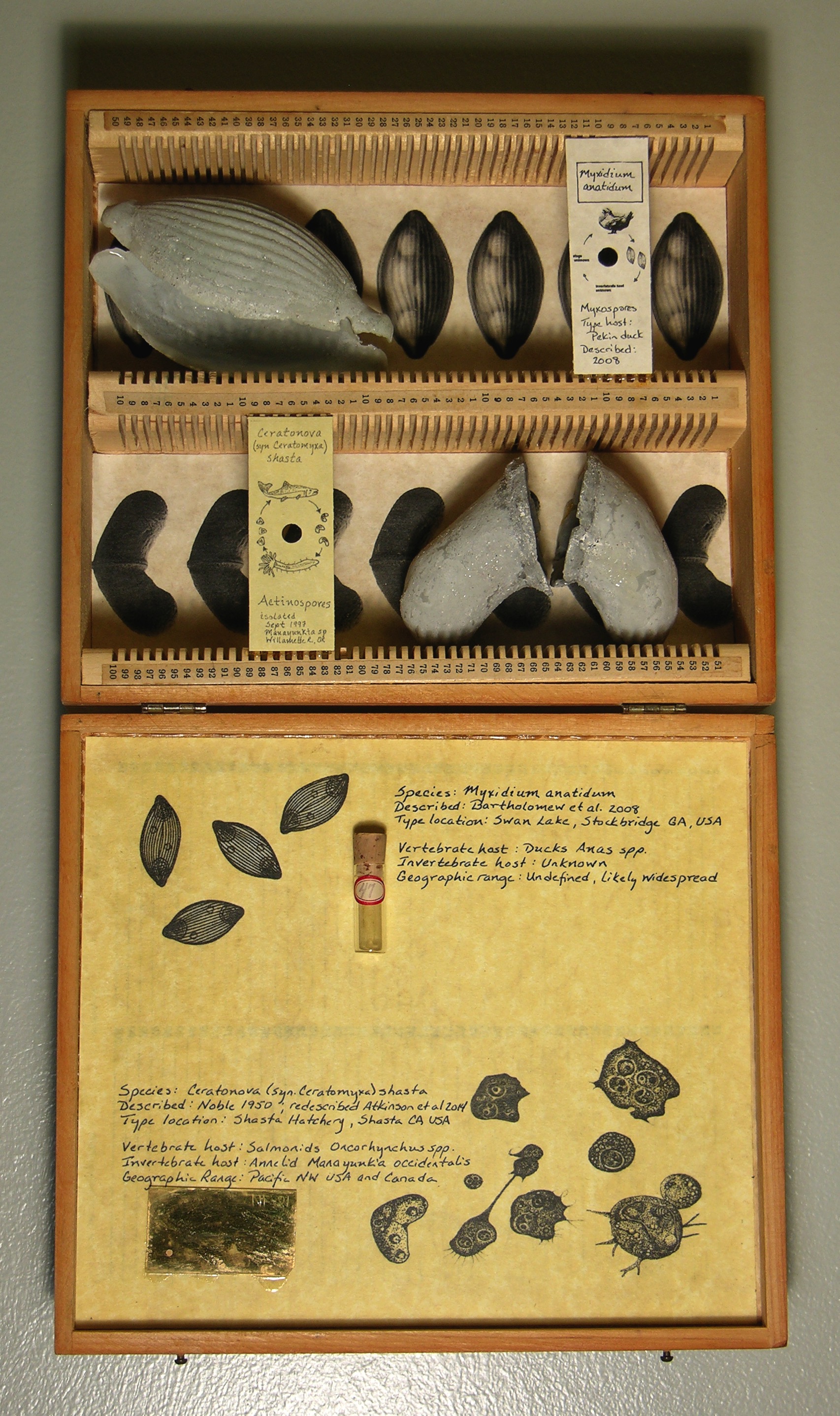
Myxoxoan life cycles
Mixed media, 2022
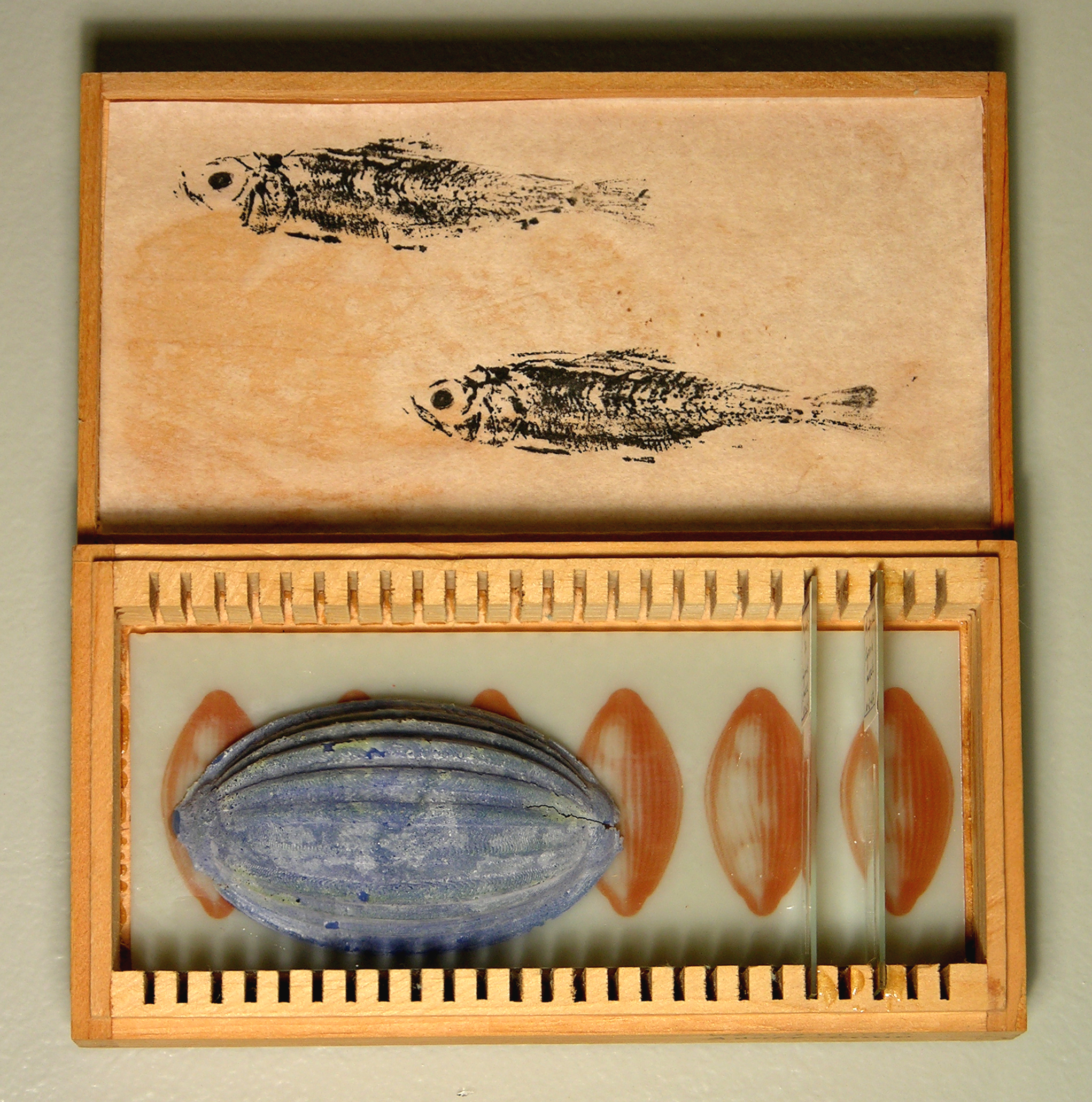
Myxidium
Mixed media, 2022
Flasks and Goblets
Cast lab glassware become goblets and chalices
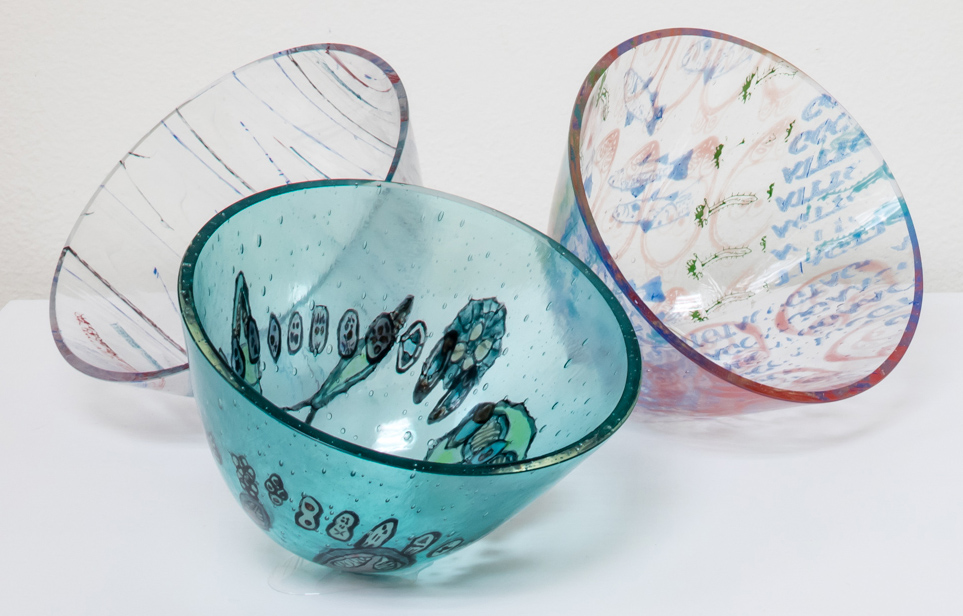
Bowls
Mixed media, 2022
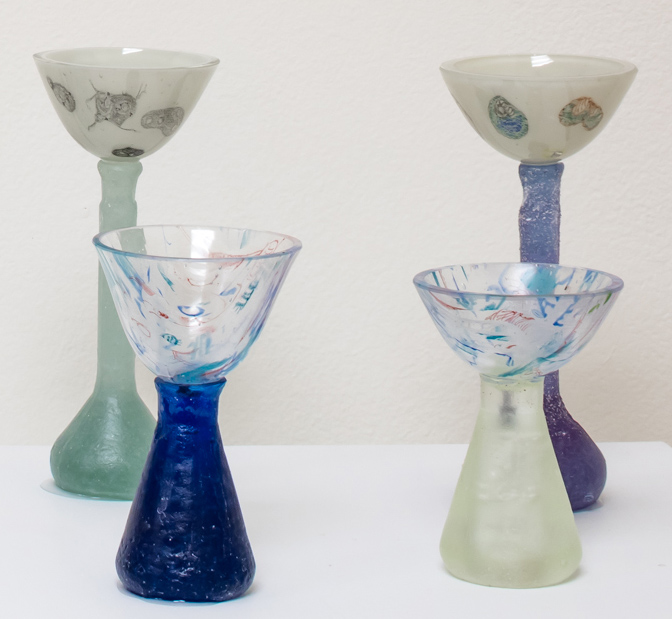
Goblets
Cast, screen-printed, fused and slumped glass
Flasks
Cast glass
Plankton
These microscopic organisms exist in the ocean, freshwater and even the air, propelled by currents and winds. Exquisitely varied in their forms and functions, they form the base of our foodweb, and thus life itself.
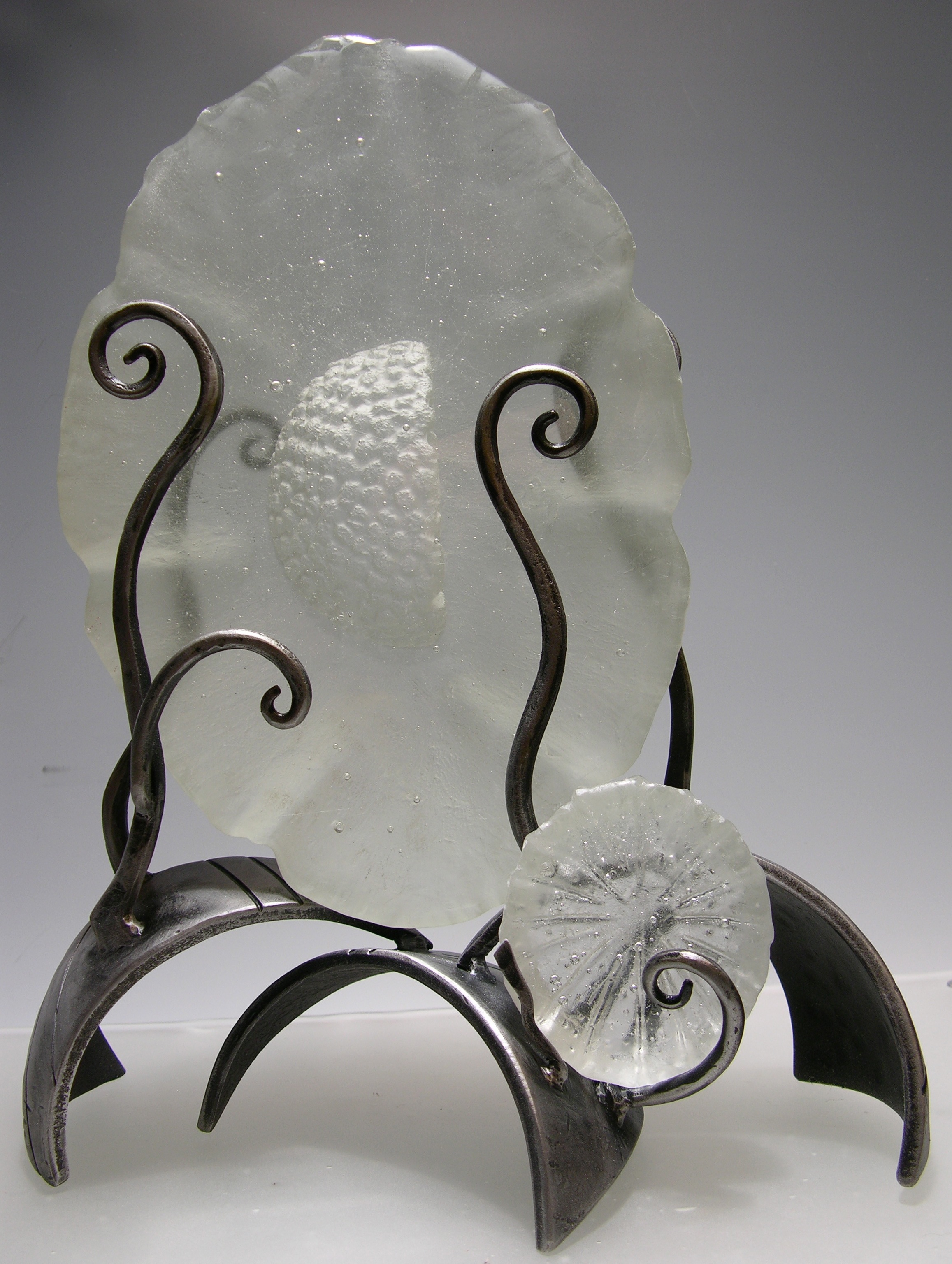
Plankton
Cast glass, welded metal, 2012
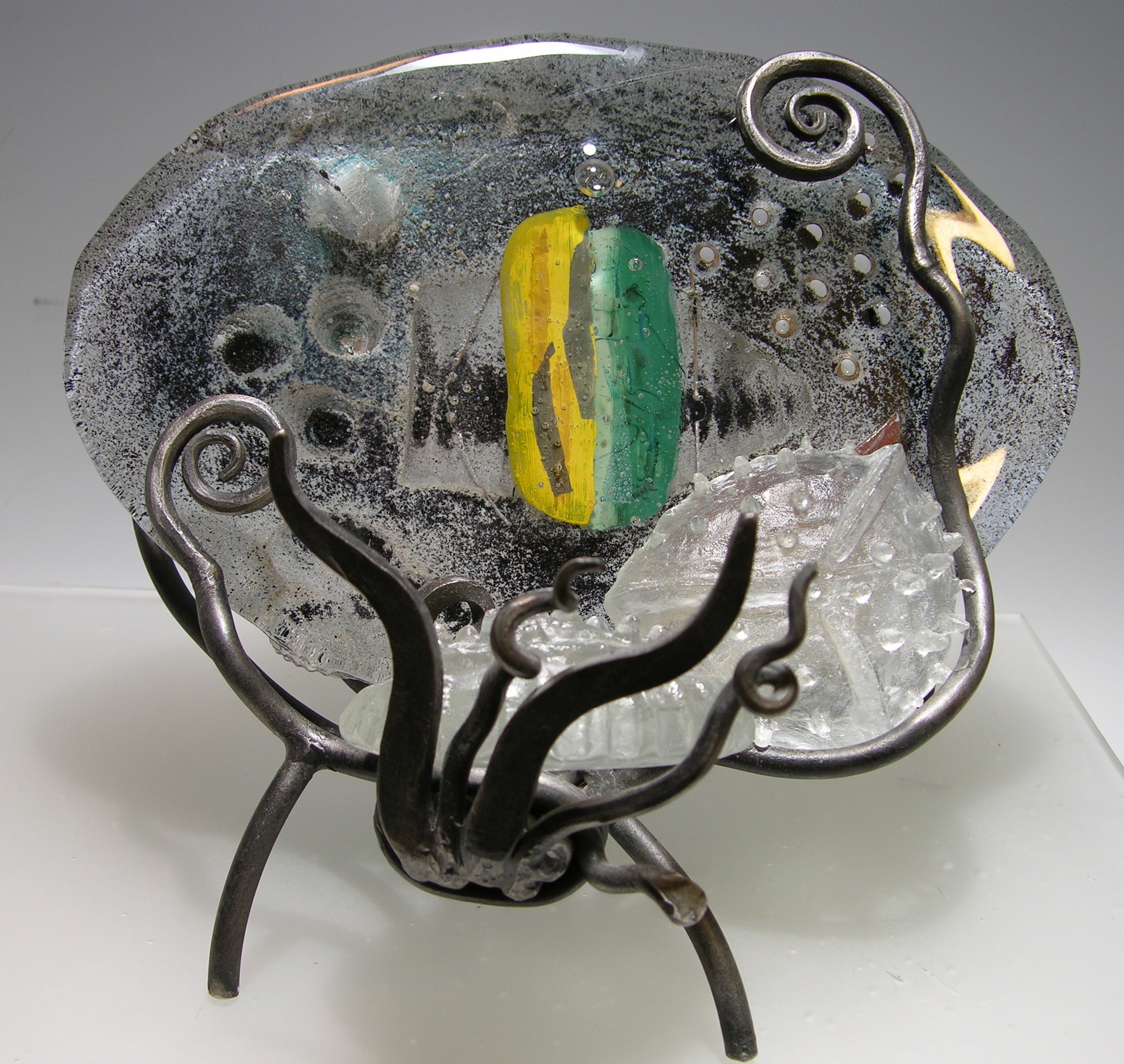
Planktos
Sand casting with inclusions, forged metal, 2003
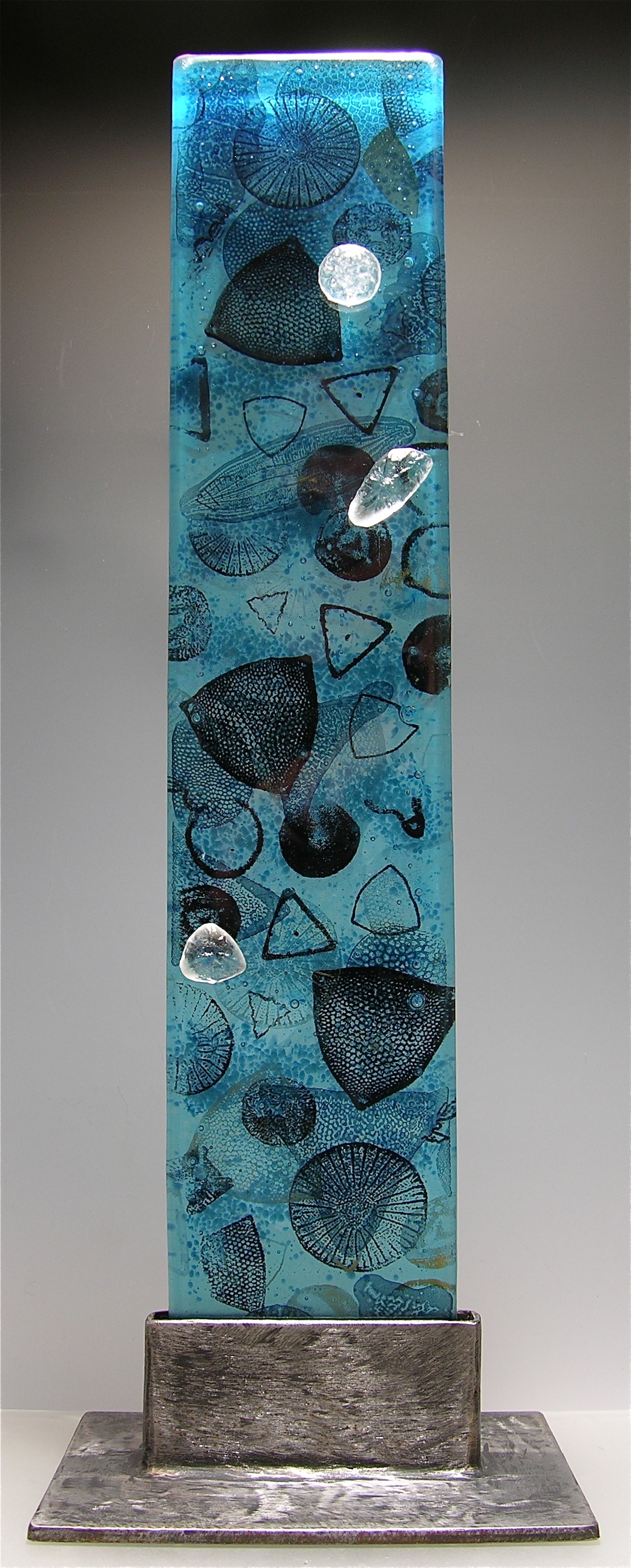
In a Drop of Water
Screenprinted, fused and glass, 2012
Tools of Science
The tools of science are essential for discovery, and they can also produce complex and beautiful images. As science evolves, some of these tools have been lost, replaced with more efficient methods. The beautiful images captured on glass plates are now digital; agar plates are replaced by streams of genetic sequences; complex antibody reaction patterns are now represented with numbers from computerized scanners. Through these pieces, I attempt to tell small stories of discovery using tools that have been supplanted.
Bacterial Colony
Fused glass, found objects, 2008
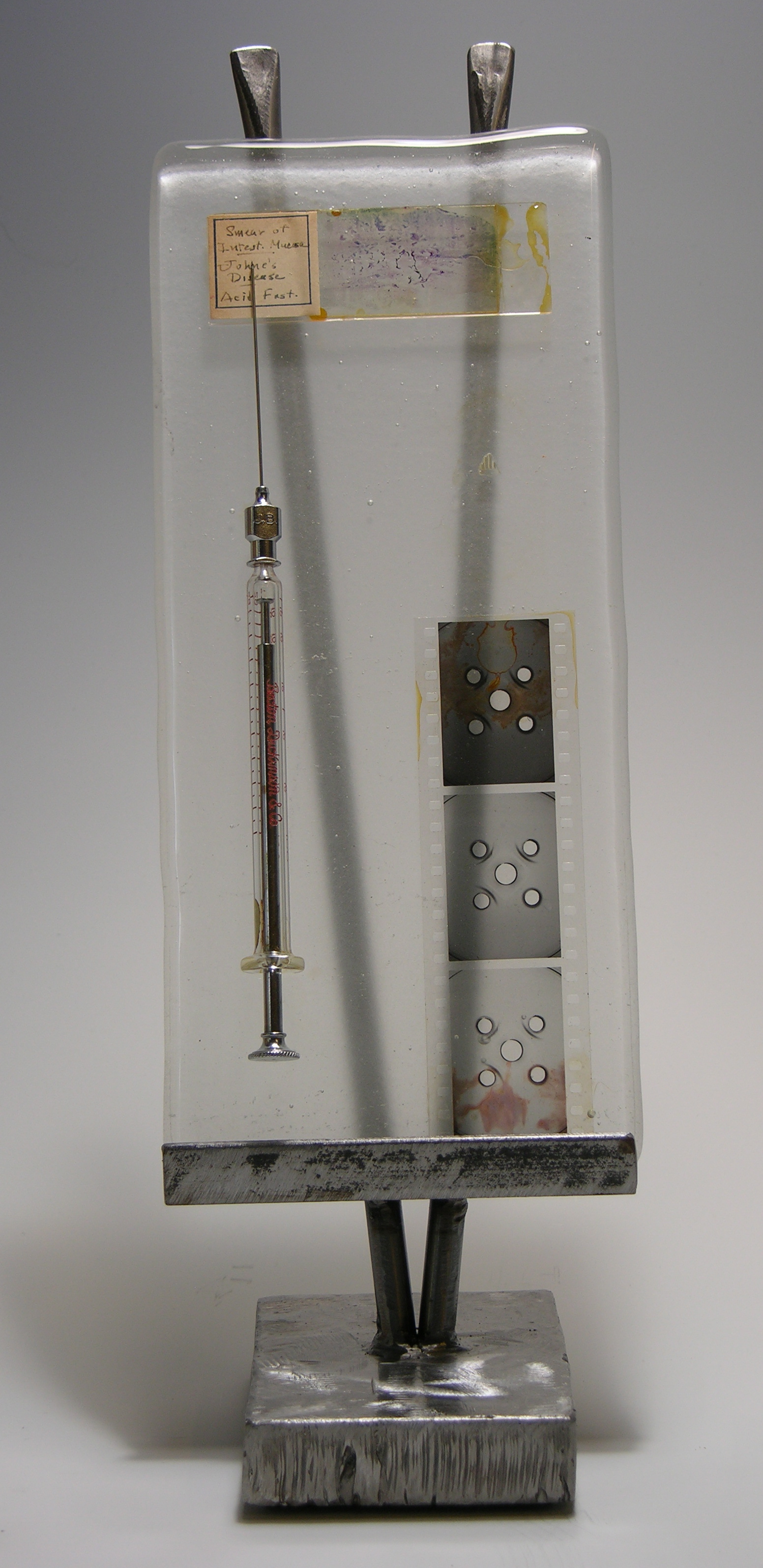
Vaccine
Fused glass, found objects, 2008
Electron Microscopy
Fused glass, found objects, 2008